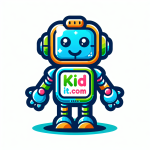Navigating Coding Levels- A Simplified Guide for Kids
In today's technology-driven world, coding is becoming an essential skill for children to learn at a young age. With the increasing demand for tech professionals, it is crucial for kids to start coding early to build a solid foundation for their future careers. However, navigating the different coding levels and determining where to start can be overwhelming for both kids and parents. This article aims to simplify the process by providing a guide on how to navigate coding levels for kids.
Why is Coding Important for Kids?
Before diving into the different coding levels, it is essential to understand why coding is important for kids. Coding teaches children to think logically, problem-solve, and be creative. It also helps improve their math and analytical skills while fostering a sense of accomplishment. Moreover, coding is a valuable skill that can open up a world of opportunities in various industries, from software development to robotics.
We Offer Tech Education, IT Education and Resources for Children
At our tech education center, we are dedicated to providing quality IT education and resources for children of all ages. Our programs are designed to make coding fun and engaging while equipping kids with the skills they need to succeed in the digital age. Whether your child is a beginner or an advanced coder, we offer a range of courses tailored to their skill level.
Understanding Coding Levels
When it comes to coding, there are different levels that children can progress through as they gain more experience and skills. Understanding these levels can help parents and kids determine where to start and how to progress. Here are the typical coding levels for kids:
1. Beginner Level
At the beginner level, kids are introduced to the basics of coding, such as understanding algorithms, loops, and variables. They usually start with block-based programming languages like Scratch or Blockly, which make coding easy and fun. Kids at this level learn how to create simple programs, games, and animations through visual programming.
2. Intermediate Level
Once kids have mastered the basics, they can move on to the intermediate level, where they learn more advanced concepts like functions, conditional statements, and data structures. They also start coding in text-based languages like Python or JavaScript, which require typing out commands and syntax. At this level, kids can create more complex projects and start to problem-solve independently.
3. Advanced Level
At the advanced level, kids have a solid understanding of coding principles and can tackle challenging projects. They delve deeper into topics like object-oriented programming, algorithms, and data manipulation. Kids at this level can create intricate software applications, websites, and games from scratch. They also have the skills to collaborate with others and contribute to open-source projects.
How to Navigate Coding Levels
Now that you understand the different coding levels, the next step is to navigate them effectively. Here are some tips on how to guide your child through the coding levels:
1. Start at the Right Level
It is crucial to start your child at the appropriate coding level based on their prior experience and skills. If your child is a complete beginner, begin with introductory courses that teach the basics of coding. For kids with some coding knowledge, consider a placement test to determine their current level.
2. Set Clear Goals
Help your child set clear goals for their coding journey. Whether they aim to create a game, build a website, or participate in a coding competition, having specific objectives will motivate them to progress through the coding levels. Encourage your child to track their progress and celebrate their accomplishments along the way.
3. Provide Support and Encouragement
As your child navigates the coding levels, it is essential to provide them with support and encouragement. Coding can be challenging at times, so be patient and offer assistance when needed. Encourage your child to ask questions, seek help from instructors, and collaborate with peers to overcome obstacles.
4. Explore Different Coding Languages
Expose your child to different coding languages and tools to broaden their skills and knowledge. Encourage them to experiment with programming languages like Java, C++, or Ruby to understand the principles behind each language. This will help them adapt to different coding environments and build a versatile skill set.
5. Continue Learning and Practicing
Learning to code is a continuous journey that requires practice and dedication. Encourage your child to continue learning new concepts, solving coding challenges, and building projects to enhance their coding skills. Provide them with opportunities to attend coding camps, workshops, and competitions to further their education and networking.
Conclusion
Coding can be an enriching and rewarding experience for kids of all ages. By navigating the coding levels effectively, children can develop crucial skills that will benefit them for years to come. Whether your child is just starting or is already an advanced coder, our tech education center offers a variety of programs and resources to help them succeed in the digital world. Encourage your child to explore the world of coding and unleash their creativity through tech education!


leave a comment